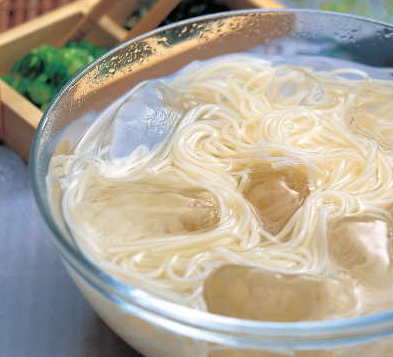
by Elizabeth Andoh | Jun 18, 2020 | Recipes, Summer
Survival strategy for hot, humid days: Chilled Sōmen Noodles-on-the-rocks! DOWNLOAD information on buying, storing and cooking sōmen and serving the noodles. © Photo by Leigh Beisch Styling by Karen Shinto ネバネバそうめん Slithery Sōmen Noodles Mouth feel (the way a food...
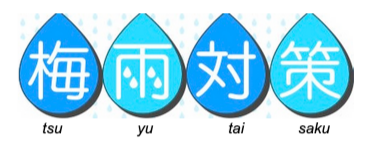
by Elizabeth Andoh | Jun 1, 2020 | Recipes, Summer
RAINY SEASON KITCHEN TSUYU (梅雨 literally, “plum rain”) comes to the Japanese archipelago every year as spring turns to summer. The constant dampness of tsuyu encourages the growth of kabi (mildew, and molds) requiring a strategy (taisaku 対策) … and...
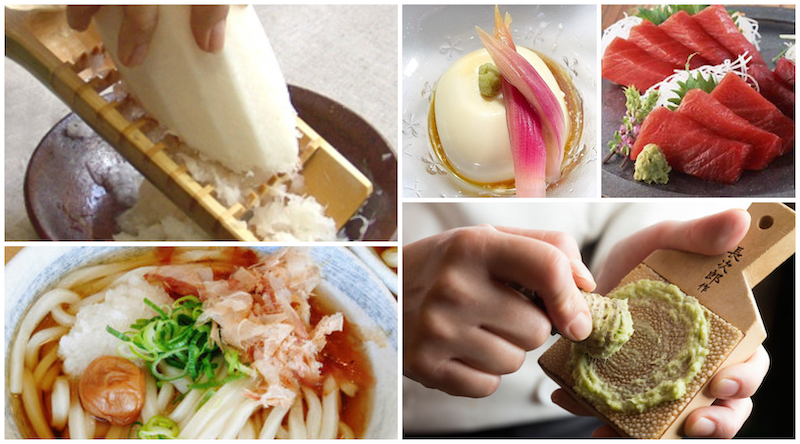
by Elizabeth Andoh | May 22, 2020 | Recipes, Spring
The Japanese developed two very special graters for two specific foods: 鬼おろし機 oni oroshi ki (“monster graters”) made from bamboo used to coarsely grate daikon into shards and鮫の皮 samékawa graters made from nubbly sharkskin that transform tough, fibrous wasabi roots...
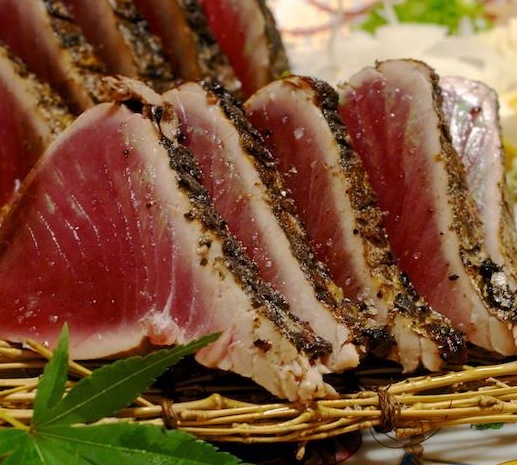
by Elizabeth Andoh | May 12, 2020 | Recipes, Spring
初鰹 HATSU-GATSUO First Catch of the Season Japan’s seasonal sensibility is always on display at table; here the transition from spring into early summer is celebrated with hatsu-gatsuo (skipjack tuna (Katsuwonus pelamis) prepared tataki-style. Whole loins of katsuo...
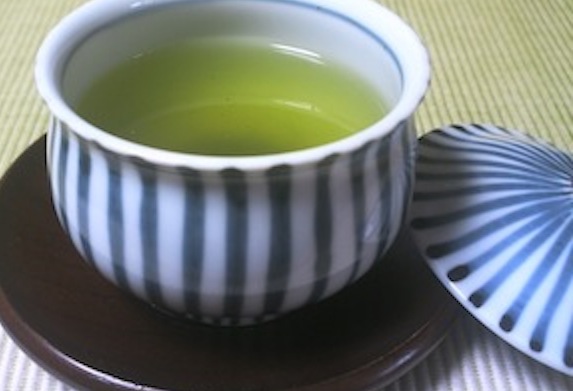
by Elizabeth Andoh | May 1, 2020 | Spring
Green Teas 緑茶 RYOKU CHA Green teas are green because enzymes responsible for oxidization have been prevented from doing their (dark and discoloring) work. The Japanese halt oxidation by steaming freshly picked leaves, while the Chinese typically pan-fire or roast tea...






